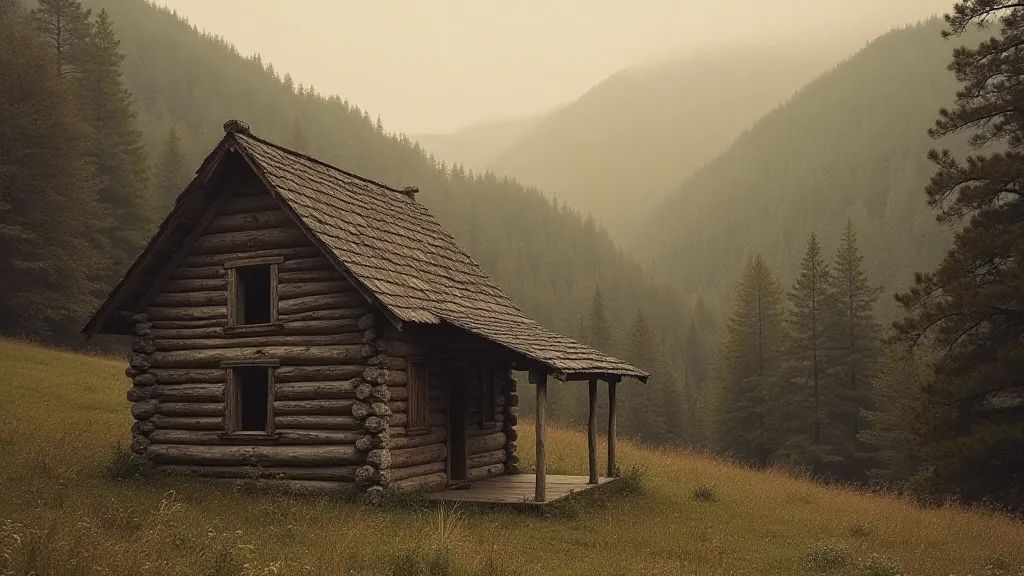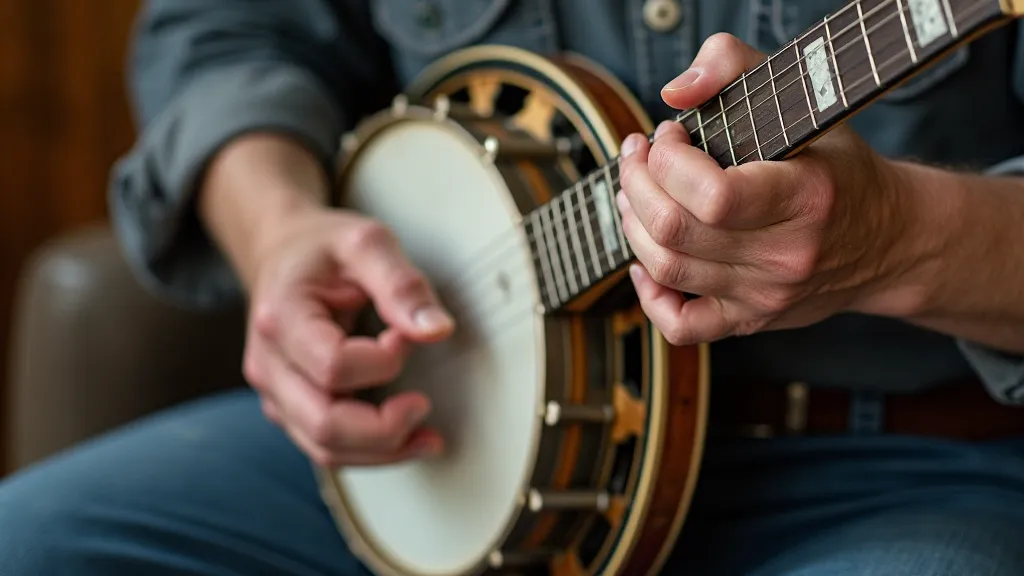Echoes of Old English: Surviving Archaic Features in Appalachian Speech
The Appalachian Mountains. A place of breathtaking beauty, rugged landscapes, and a people fiercely connected to their heritage. But beyond the stunning vistas and enduring traditions lies something equally captivating: a linguistic landscape unlike any other in North America. Appalachian dialects aren’t simply ‘different’ ways of speaking; they are living time capsules, preserving fragments of Old English, Scots, and other influences that have largely vanished from more mainstream American English. It's a conversation echoing across centuries, a subtle but powerful reminder of how language evolves, and how certain corners of the world can hold onto the past with remarkable tenacity.
I remember visiting my grandmother in Kentucky as a child. Her voice, rich and warm, was a constant source of wonder. It wasn’t just the cadence or the distinctive pronunciation – although those were certainly memorable – but the feeling of stepping back in time. She used words and phrases I’d never heard anywhere else. At the time, I just thought it was “Grandma talking.” It wasn’t until years later, studying linguistics, that I began to understand the significance of what I was hearing: I was listening to a living connection to the linguistic roots of English.
The Foundation: Settlers and Their Language
To understand the survival of these archaic features, we need to look back to the waves of settlement that shaped Appalachia. The initial influx wasn’t driven by urban populations or educated elites. Instead, it was predominantly comprised of Scots-Irish immigrants, also known as Ulster Scots, alongside a significant number of English settlers from the West Country and the North of England. These weren't people necessarily seeking a new life in bustling cities; they were often seeking land, autonomy, and escape from hardship. And they brought their language with them.
The influence of Scots-Irish immigrants on Appalachian dialects is undeniable, and their linguistic heritage is intricately interwoven with the region’s unique character. Understanding the specifics of this influence, from grammar to vocabulary, reveals a deeper appreciation for the richness and complexity of Appalachian speech. Exploring Ripples in the Pool: The Influence of Scots-Irish on Appalachian Dialects provides a fascinating dive into this pivotal aspect of Appalachian linguistic history.
Crucially, these early settlers were often less exposed to the standardization of English that was taking place in England during the 17th and 18th centuries. The Great Vowel Shift, a series of changes in vowel pronunciation that transformed Middle English into Modern English, hadn't impacted the remote communities they hailed from as drastically. Their speech remained closer to the older forms. Isolated geographically, these communities developed independently, preserving those older forms long after they were altered or lost in more connected regions.

Key Archaic Features: A Glimpse into the Past
So, what exactly are these ‘archaic’ features? They’d likely sound unusual or even perplexing to many modern English speakers. One of the most striking is the preservation of the ‘rhotic’ pronunciation – that is, pronouncing the ‘r’ after vowels. While rhoticity was the norm in most English dialects centuries ago, it’s now largely absent from mainstream American and British English. In Appalachian dialects, that ‘r’ is stubbornly present and proudly pronounced.
Beyond rhoticity, we find traces of older grammatical constructions. Consider the use of “a-doing” instead of “doing.” Instead of saying "I'm going," an Appalachian speaker might say "I'm a-going.” This reflects a pattern common in early Modern English. Similarly, double negatives, while often frowned upon in standard English, are frequent in Appalachian speech, mirroring patterns found in dialects hundreds of years ago. For example, "I don't have none" replaces "I have none." The prevalence of specific terminology within these traditional remedies, often deeply intertwined with local dialects, demonstrates the intricate link between language and culture – a connection further illuminated when considering The Language of Healing: Traditional Remedies and Dialectal Terminology, which explores the nuances of this intersection.
Vocabulary is another crucial area of preservation. Many words that have faded from wider English usage remain vibrant in Appalachian dialects. "Holler," for example, means a small valley or hollow – a term derived from older Germanic roots. "Poke," meaning a bag or sack, is another example. And "reckon," used to mean “think” or “suppose,” echoes archaic English verb conjugations. These aren’t simply quaint relics; they offer invaluable clues to the evolution of the English language and the interconnectedness of words across time and geography. The subtleties of these regional terms often defy easy translation, further highlighting the unique linguistic landscape of Appalachia.
The Craftsmen of Language: Transmission and Resilience
The survival of these linguistic features isn't simply a matter of chance. It's a testament to the power of oral tradition and the strong sense of community that has characterized Appalachian culture. Language, like any other cultural artifact, is passed down through generations. Parents teach their children how to speak, reinforcing patterns and vocabulary. Storytelling, singing, and traditional music all play a vital role in preserving these linguistic nuances. This process isn't unlike the meticulous work of a craftsman restoring an antique accordion - each component, each phrase, carefully maintained and passed down.

The landscape itself – the winding roads, the hidden valleys – has influenced the terminology and linguistic patterns. Imagine attempting to accurately depict the boundaries of a property in such a terrain, or describing the specific topography to someone unfamiliar with the area. This necessity to create precise and nuanced descriptions has shaped the dialect over generations, making it a reflection of the physical environment as much as it is a product of historical migration. The way communities understand and describe their surroundings is inherently linked to their language, and the process of mapping these linguistic boundaries, or lack thereof, provides valuable insights into the dynamic nature of dialectal drift – a topic examined in more detail within The Cartographer’s Quill: Mapping the Edges of Dialectal Drift.
The decline of rural industries, the rise of mass media, and increased migration patterns have undoubtedly put pressure on Appalachian dialects. Exposure to standard English through schools and television can lead to code-switching – adapting speech to fit different social contexts. However, there’s also a growing awareness and appreciation for the value of preserving these unique linguistic traditions. Efforts are being made to document and revitalize Appalachian dialects, recognizing that they are an integral part of the region’s cultural heritage. The aesthetic quality of Appalachian speech – the rhythm, the intonation, the distinct way words are shaped – contributes significantly to its appeal and resilience. Understanding how the sound of "purty" and other phonetic variations shape perceptions of Appalachian speech offers a fascinating perspective on the role of aesthetics in language maintenance – a nuanced exploration found in The Melody of 'Purty': Aesthetics and Phonological Variation.
Listening for the Echoes: Respect and Understanding
For those of us not raised in these communities, it's important to approach Appalachian speech with respect and understanding. Avoid mockery or ridicule. Recognize that these are not ‘incorrect’ ways of speaking; they are simply different dialects with their own rich history and complexity. When listening, try to hear the echoes of Old English, the whispers of generations past, and the enduring strength of a people fiercely connected to their roots. Like a carefully restored antique, these dialects deserve to be cherished and preserved, not dismissed or discarded.
Furthermore, appreciating the craftsmanship of language – the deliberate and consistent patterns of speech passed down through generations – can deepen our understanding of human communication itself. Just as a skilled artisan takes pride in their work, so too do Appalachian speakers carry a profound connection to their linguistic heritage. Listening to their voices is, in a sense, listening to history itself. The very soundscape of Appalachia, shaped by these linguistic patterns, contributes to the region's distinct identity and cultural richness, inviting us to listen carefully and with a genuine desire to understand the stories embedded within its sounds.






